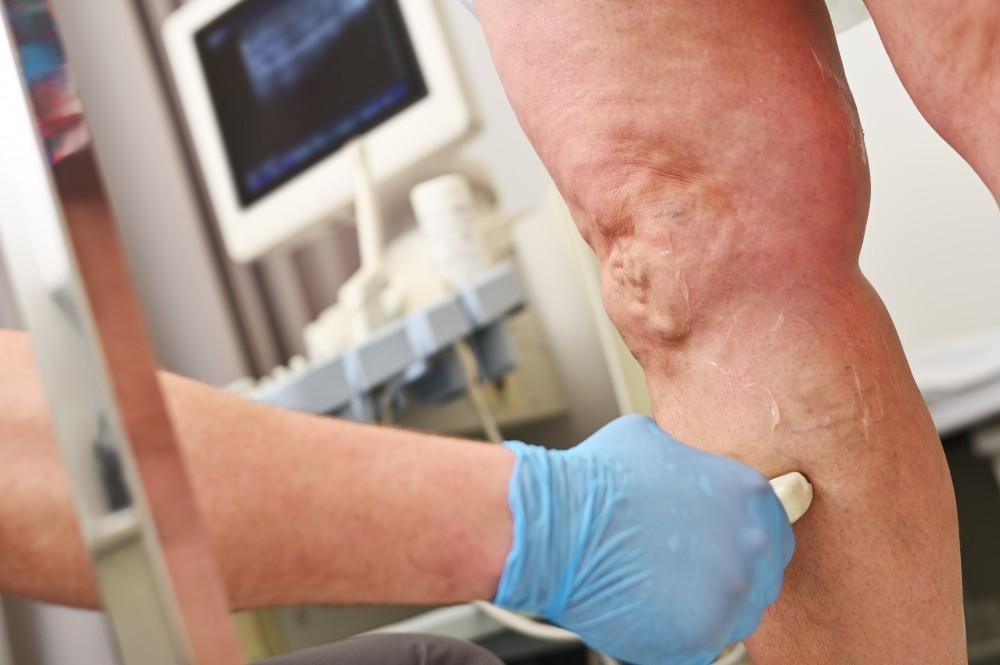
Understanding Venous Insufficiency: Signs, Causes, and Treatments

If you’re Googling “what is venous insufficiency?” you’re not alone.
On Thursday, July 17, 2025, White House Press Secretary Karoline Leavitt shared that President Donald Trump was diagnosed with chronic venous insufficiency.
While this update explained the recent swelling in President Trump’s ankles, it also sparked nationwide interest in this often-overlooked condition and a deluge of Google searches on the topic.
While it may sound complex, venous insufficiency is a common circulatory issue that affects millions of Americans, particularly those over 50 years old. In fact, 150,000 Americans are diagnosed with the condition each year.
If you’re curious about venous insufficiency, read on to learn more about its signs, causes, and treatments, courtesy of Dr. Jacobs and our South Shore Vein and Aesthetic Medicine team.
Understanding venous insufficiency
Venous insufficiency occurs when the one-way valves in your leg veins become weak or damaged. This is problematic because weakened valves allow blood to pool instead of flowing upward toward your heart.
This backward flow (reflux) increases pressure in your veins and can cause a variety of uncomfortable symptoms.
Signs that you may have venous insufficiency
The symptoms of venous insufficiency often start subtly and may worsen throughout the day or after long periods of standing or sitting.
You might suspect that you have venous insufficiency if you have:
- Achy, heavy-feeling legs
- Swelling in your lower legs or ankles (especially in the evening)
- Varicose veins or spider veins
- Skin changes or discoloration, especially around your ankles
- Itchy skin on your legs and ankles
- Leg cramps
- Ulcers or open sores that are slow to heal
If you're noticing these symptoms regularly, especially swelling or visible vein changes, it's time to talk to a specialist like Dr. Jacobs.
What causes venous insufficiency?
There isn’t a single cause of venous insufficiency. Several factors can work together and contribute to the development of venous insufficiency, including your genetics, age, and gender.
Obesity — carrying extra weight strains your veins — and prolonged sitting or standing can also increase your risk of venous insufficiency.
While most of these risk factors are beyond your control, you can take action to manage your weight and improve your activity levels.
Diagnosing and treating venous insufficiency
When it comes to diagnosing and treating venous insufficiency, expertise matters. Dr. David Jacobs is the only physician in southern Nassau County certified in phlebology (the specialty of vein medicine) and one of the few in the greater New York area.
During your visit, Dr. Jacobs:
- Takes a thorough medical history
- Performs a physical exam
- May recommend a venous ultrasound to assess blood flow in your legs.
Venous ultrasounds are an important part of your care plan. This non-invasive test helps identify valve dysfunction or blockages that may be causing your symptoms.
The goal of your treatment is threefold: to improve your blood flow, relieve symptoms, and prevent complications like deep vein thrombosis.
Depending on the severity of your condition, Dr. Jacobs may recommend:
Lifestyle changes
Lifestyle changes, such as elevating your legs, exercising regularly, and avoiding long periods of standing or sitting, can support your vascular health. These habits can be paired with treatments to help prevent future issues.
Compression therapy
Medical-grade compression stockings help move blood upward. These are available in different strengths, so be sure to wear the strength recommended by Dr. Jacobs.
Medications
In some cases, medications may reduce inflammation or prevent blood clots.
Minimally invasive procedures
At South Shore Vein, all procedures are performed by Dr. Jacobs himself in a modern, comfortable facility.
Endovenous laser therapy (EVLT) is a common treatment for venous insufficiency. Dr. Jacobs uses a laser fiber that gently heats and closes problematic veins from the inside. This outpatient procedure is quick, uses only local anesthesia, and allows you to return to normal activities the next day.
Other industry-leading treatments include ultrasound-guided Varithena® foam treatment, VeinGogh, and cryo-sclerotherapy.
Surgical options
In rare or severe cases, surgical vein removal may be recommended. In the case of microphlebectomy, Dr. Jacobs only needs to make a tiny incision measuring approximately 1 millimeter in length.
Get answers about venous insufficiency
Whether you're just starting to notice symptoms like swollen ankles or have been dealing with discomfort for years, Dr. Jacobs is here to create a personalized treatment plan to restore healthy circulation and get you back to feeling your best.
Contact us to schedule a consultation, or simply give us a ring at 516-865-1234.
You Might Also Enjoy...


The Dangers of Deep Vein Thrombosis

Why Facial Veins Appear and What You Can Do About Them

Are Varicose Veins a Health Concern?

Can I Have Botox and Dermal Fillers During the Same Treatment Session?


